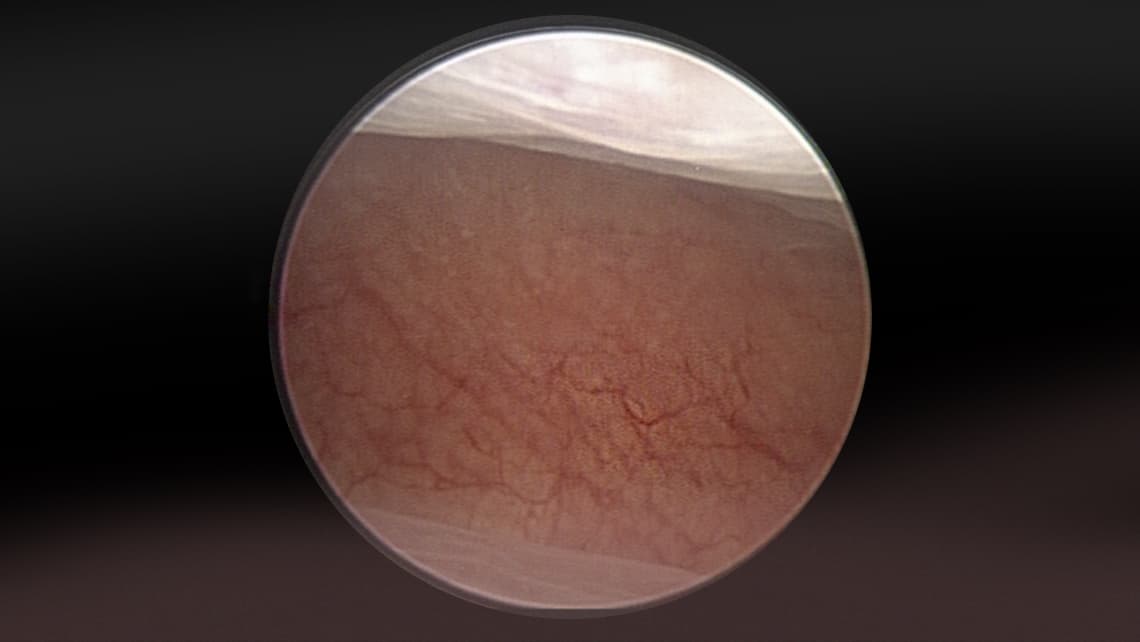
Diagnostic hysteroscopy and endometrial scratching
We consider an evaluation of the uterine cavity and a check to ensure normal structure in the tissue that lines it (the endometrium) to be a standard part of any implantation failure study. In order to carry out such a study, the most appropriate diagnosis consists of a diagnostic hysteroscopy and an endometrial biopsy.
A hysteroscopy is an endoscopy of the uterus. In other words, direct inspection of the uterine cavity using an optical system. It’s a simple test and practically pain free in most cases. Therefore, it is generally carried out during an appointment with minimal patient preparation and no impact on her daily life.
But what abnormalities in the uterine cavity can be detected that have not already been detected in an ultrasound? Whilst a high percentage of women’s hysteroscopy results are normal, in the remainder, distortions in the uterine cavity which complicate implantation can be found. Amongst them, the most common are polyps, intrauterine adhesions and malformations (mainly uterine septum or partition). All of them may be treated through surgical procedures.
Endometrial scratching (endometrial biopsy) as a therapy in cases of implantation failure.
In another group of patients, the uterine cavity may, furthermore, be entirely normal but the endometrium which lines it, however, is not. In order to detect such abnormalities, a sample will need to be taken using a small grasper or a cannula so that it can later be studied in the laboratory. This procedure is known as an endometrial biopsy and it does not imply any significant additional discomfort. Amongst the most common abnormalities are hyperplasia or, in other words, excessive development of the endometrium, and inflammation or endometritis, both of which may be treated.
Endometrial scratching, on the other hand, is a procedure that consists of intentionally damaging the endometrium such that, as it heals later on, an improvement in future embryo receptivity is achieved. Therefore, the endometrial biopsy described above is scratching in itself as well as a means of studying the tissue.
Whilst endometrial scratching is a technique that is increasingly common in recurrent implantation failure treatment, to date, scientific literature has still been unable to provide evidence of a clear beneficial effect. Therefore, it should be used under strict medical control and, by way of an orientation, it should be used for women who have undergone 2 embryo transfers or more with high quality embryos (and, where possible, chromosomally normal embryos) and for whom all other implantation failure studies have not provided evidence of any clear cause.
It is also important to point out that scratching is an invasive procedure and, whilst they are not common, complications such as pain, haemorrhages or infection can occur.
